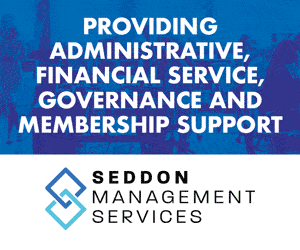adi Facilities Engineering‘s Brian Imrie discusses why a turnkey approach to energy management has become essential for improving efficiency and cutting costs within manufacturing businesses.
With rising energy costs and increased focus on sustainability targets, manufacturing businesses are under mounting pressure to find innovative ways to drive down energy consumption. Speaking exclusively to FM Director, Brian Imrie, Managing Director of adi Facilities Engineering, explains how the company’s approach is helping clients navigate these challenges through technology, AI, and forward-thinking strategies.
adi Facilities Engineering, a division of adi Group, specialises in managing indirect facilities for manufacturing businesses – from utilities and building fabric to estates management. While they typically focus on hard services, occasionally clients ask them to handle soft services like cleaning, security, and catering as well.
“What we’re finding now in all manufacturing businesses is the cost of energy is continually rising, and they’re all looking for sustainable operations, energy management, and how they can drive the costs out from producing their products,” explains Imrie.
Beyond the Easy Wins
According to Imrie, most businesses have already implemented the “easy wins” in energy management – installing PIR lighting controls, linking systems so air conditioning turns off when windows open, and similar efficiency measures. The focus now needs to shift toward more sophisticated approaches.
“The conventional easy wins have been done for most businesses. Now it’s a bit more in-depth. We’re looking more at process-driven energy savings rather than just indirect facilities,” he says.
This deeper approach was recently demonstrated when adi signed a contract with a large semiconductor manufacturer, committing to 5% year-on-year energy reductions. With the client currently spending approximately $2.5 million annually on energy, the potential savings are substantial.
“We’re looking at either energy efficiency of the existing kit, replacing kit with new modern energy-efficient equipment, or even discussing options like solar farms or wind turbines to generate a lot of their electricity, as they have quite a bit of land available,” Imrie explains.
Embracing Technology and AI
Central to adi’s approach is the integration of modern technologies, particularly the Internet of Things (IoT) and artificial intelligence, to create smarter energy management systems.
“We’re integrating modern techniques in terms of the Internet of Things and real-time data. We’re trying to connect assets and equipment to real-time reporting so that we can see energy movements. Then, through artificial intelligence, we can build up a pattern and trend of when these things are operating and how they’re operating,” says Imrie.
This intelligent approach allows for more nuanced energy management. For example, rather than allowing a massive energy spike when shifts begin at 6am as heating, lighting, and equipment are all switched on simultaneously, the AI system can start gradually ramping up from 5:30am.
“Instead of a massive spike, we can ramp up really slowly. By the time people come in, it’s warm, the lights have warmed up, or the boilers are fired up, and we’re not having that massive peaking energy,” Imrie notes.
The system can also adjust to production volumes, ramping down energy use when approaching the end of a batch run, for instance. It’s about using AI and monitoring technology to simulate conditions and plan for future operations more efficiently.
Overcoming Resistance to Change
Despite the clear benefits, Imrie acknowledges that many UK manufacturing businesses are slow to adopt modern technology. Some remain labour-intensive by necessity, such as a major food manufacturer adi works with that still makes samosas and spring rolls by hand as a unique selling point for Marks & Spencer.
However, even traditional operations can benefit from intelligent monitoring in other areas of their business. “We can start linking intelligence and monitoring and sensors to know when things are going out of temperature or specification and react straight away, rather than waiting for something to fire or switch off or overheat,” he explains.
One challenge is the investment required. While businesses used to look only at technologies with one or two-year paybacks, they’re now starting to consider 5, 10, or even 20-year paybacks as they better understand the sustainability impact.
“There’s also some fear of it,” Imrie notes, referring to concerns about AI. “It’s been all over the news that it will take over human jobs. But some of the fear we find is about pioneering. People don’t particularly want to be the first to market to try this technology; they want to see it proven somewhere else. And if everybody does that, it never gets implemented anywhere. Somebody’s got to be the Guinea pig.”
Creating Energy Roadmaps
To help clients overcome these concerns, adi encourages them to develop long-term plans for energy management.
“We encourage all our clients to go down that journey with us. We’ll come up with an energy roadmap or a sustainability roadmap and try to plan that for the future, creating a master plan that says in so many years’ time, we’ll be at a certain point in the journey,” Imrie explains.
Client responses vary, with some showing no interest or citing lack of investment funds. For the latter group, adi offers flexible solutions. “We say, ‘Let’s plan for investment over a period of time,’ or even, to some extent, we’ve invested some of our own money and said we’ll put the initial investments up front, and then you pay us back over a period of time – just to try and pioneer it and push it forward.”
While adi isn’t investing “millions and millions,” Imrie says the company is willing to invest up to about half a million pounds if it helps demonstrate the value of these technologies.
Convincing Customers
The ongoing challenge is convincing customers that embracing technology is the right approach, especially when they’re focused on increasing production capacity.
“At the end of the day, customers get paid for products out the door; they don’t get paid for anything else,” Imrie acknowledges. “But it’s about convincing them that by adopting some of the technologies we’re trying to promote, we can lower the unit cost of manufacturing. It’s not necessarily about making more products, but lowering the unit cost of each product,
which increases their profit margins. This means they can reinvest or, as it is at the moment, keep the shareholders happy.”
Building Skills for the Future
Beyond technology adoption, adi is addressing another critical challenge: the skills shortage in engineering. Finding qualified engineers to install and maintain equipment is becoming increasingly difficult.
In response, adi has enhanced its apprenticeship programmes and even established a pre-apprentice initiative in partnership with local schools. The programme brings 14-16 year olds into the company’s Birmingham head office to gain practical experience in electrical and mechanical skills.
“Engineering’s been taken off the schools’ curriculum by the government years ago, and this has become part of a recognised qualification for them to gain engineering skills. If they graduate with us, they can apply for a full apprenticeship at 16,” Imrie explains.
This proactive approach to skills development is crucial, as Imrie notes that “children coming out of school now don’t want to be hands-on with tools. They want to have a laptop or computer or iPad and work electronically.”
Without these skills, “we end up becoming a throwaway society because nobody can fix anything,” he adds.
Looking Ahead
As energy costs continue to rise and sustainability targets become more stringent, the need for comprehensive energy management strategies will only grow. adi Facilities Engineering is positioning itself at the forefront of this transition, helping manufacturing businesses adapt to the changing landscape through innovative approaches that combine technology, expertise, and long-term planning.
For companies willing to embrace these changes, the rewards extend beyond cost savings to include improved sustainability credentials, greater operational efficiency, and a competitive edge in an increasingly challenging market.






















































